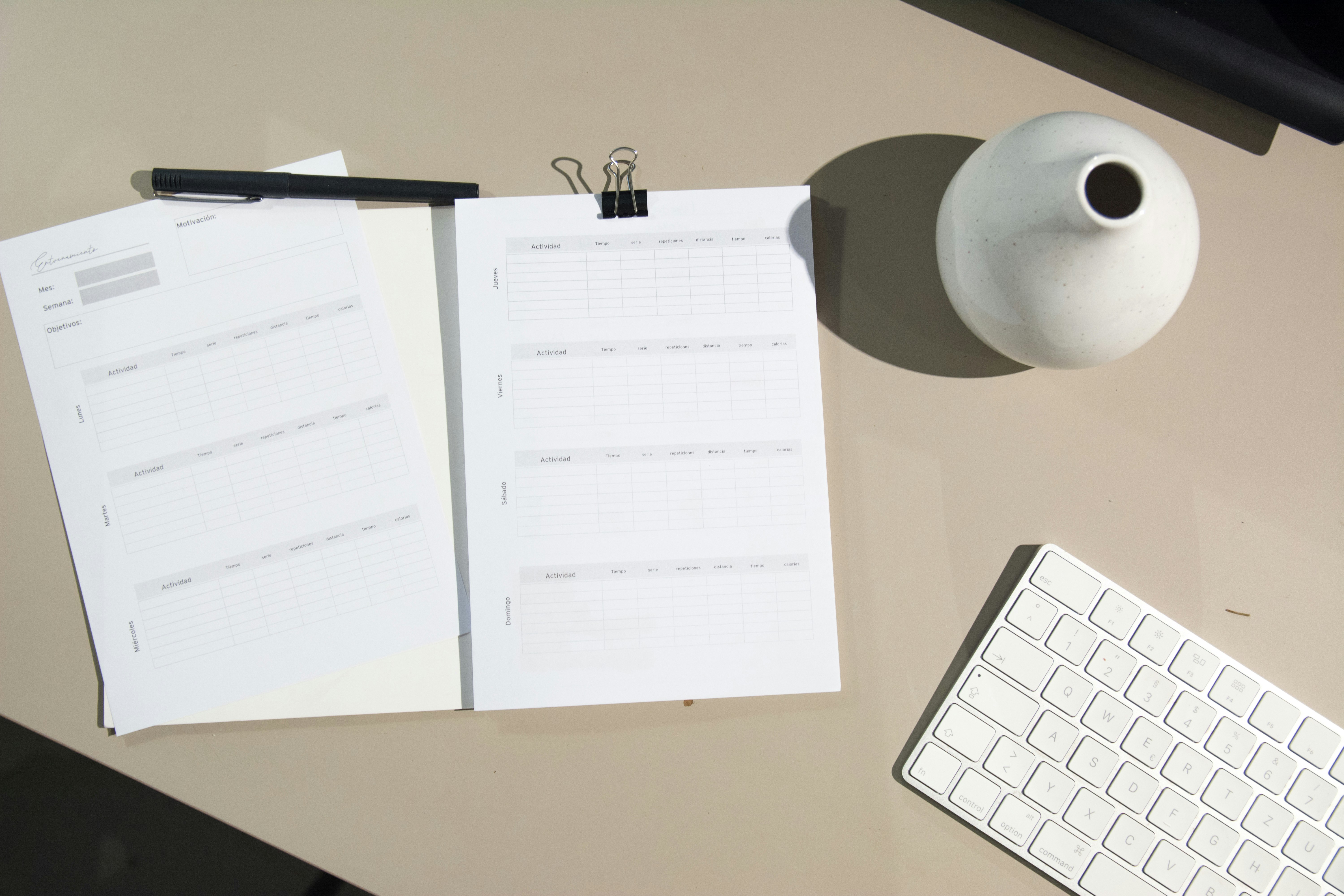When working towards a new and improved healthy lifestyle, there are a number of things you need to consider throughout your journey. One the many ways you can keep track of the multiple aspects of your health and fitness progress is through a fitness planner or diary. It is essentially a documentation of everything that has to do with your fitness journey, be it your exercise schedules, caloric intake, physical progress, and many more; all in one place.
What is Fitness Planner Diary?
A fitness planner diary, or a Workout or Exercise Diary, helps you keeps track of your records, goals, workouts, and even your daily nutrition.
A fitness journal is an essential tool that can help you in easily determining what works in your exercise routine and what doesn't. Keeping track of important metrics helps you keep on track and ideally progress faster toward your fitness goals, and help you identify the factors that move you off track in the process as well.

How do you start a Fitness Planner Diary?
It all starts with choosing the right medium for your fitness journey and already-existing lifestyle. If you're someone who is just starting out or if you're someone who tends to overlook your routine, starting and keeping a physical journal may help you better with planning and visualization. If you're constantly on the move and need to repeatedly make amendments on the go, you could consider starting a e-fitness planner on a digital device.

If a physical journal with 12-week goal setting periods and other workout-centric formatting options would help you get started more quicker, you can do just that. Or you can pick up any other notebook and make it your log. Alternatively, digital journals or apps can provide built-in structure and even training-specific stats that you can turn into graphs to track progress.
Using templates as starting bedrocks to track your health and fitness can ease you into the journey as well. Tracking your weight with weight loss tracker, or calculating the number of calories you are consuming and burning with a calorie counter can save you the trouble of coming up with tables or a metric tracking system from scratch.
Whatever medium is the easiest for you to commit to, stick with it.
What do you include in a Fitness Planner Diary?
Here are a few details you can include in your fitness planner diary:
- Sleep duration and quality
- Physical progress photos
- Healthy recipes
- Inspirational quotes
- Personal achievements and milestones
- Articles or blogs you can reference for additional information
- Exercise frequency and workouts - Every time you work out, be sure to log the date, day of the week, start and finish times, and the set of exercises you perform.
- Fitness goals/targets - Without goals, it's difficult to determine if you're on the right track. Different goals should be set for different lengths of time. You should set daily, weekly, monthly, and yearly goals related to:
- Processes, such as including new exercises or moving to more difficult progressions of an exercise
- Outcomes, like being able to lift a certain amount, hitting a particular number or reps, or running a certain speed
- Physical body, such as losing or gaining a certain amount of weight
Benefits of having a Fitness Planner Diary
Writing down or recording your fitness, be it from the past, present, or future puts you in a position to repeat successes and awareness. This would help you build on what you know and what you have been doing, and find out what hasn't worked. With this understanding, you can develop healthy habit patterns and better avoid paths to failure.
It also helps you plan and maintain your focus, which can help to make your workouts more intentional. Because fitness journals include more than just sets and reps. What you write down, how to do it, and dedicated penmanship can lead to unexpected, unprecedented gains, no matter what your goals are.
Tips for Starting a Fitness Planner Diary
1. Assess your starting fitness level
Before you can make a fitness plan, you will need to determine your current fitness level. Think about what you can do and what you cannot do physically.
2. Outline your Fitness Goals
Before you start tracking your progress, you need to know where you’re looking to go. Whether you're aspiring to lose weight or reduce your BMI number, decrease your run time, or lift heavier weights—write them down explicitly. Once you are aware and clear about what you are striving for, you can check back in at these goals every now and then for motivation and an extra push.
3. Outline your Food Goals
What you eat plays a major role in your overall fitness levels. When you see your food habits in writing or in notes, they can be illuminating. The Reese’s Cups you had with lunch may not seem like a bad thing until you realize you’ve had 4 a day for 6 days in a row. This can give you a different perspective on your eating habits.
4. Make a plan according to your goals
With your goals in mind, start working on an action plan to reach your goals. Plan when you will work out on which days, when your workout plans will reach the final goal, and what you will do to get there.
Figure out how you can get a healthy amount of moderate exercise in each week. If you are really pressed for time, make that 75 minutes of vigorous exercise. Weight training or resistance training is recommended twice a week and can be included in the 150 minutes of moderate exercise. Adjust your plan accordingly.
5. Create your workout schedule
Work on a workout schedule that can fit into your current lifestyle and pre-existing schedule. A workout schedule would need multiple components to be functional. Your training frequency can vary. Most fitness plans call for 3-5 days per week of training, and some say to workout every day. This is entirely up to your discretion and your timeline.
6. Record your exercise frequency
Multiple healthy habits and patterns need to coincide for you to lead a healthy lifestyle. And for how long. If you’re training for a 5K, writing down your times can help you reach your overall fitness goals. If you’re looking to lift more weights, keep track of your daily successes. Some days you’ll do better than others and that’s okay. Your fitness journal will show you which days are your prime workout days.
7. Adjust your goals if necessary
Based on how a few weeks may have passed, make necessary adjustments to your workout schedule, your timeline towards your goals, and maybe your goals themselves. Maybe you overestimated your fitness level, or bit off a goal larger than you can chew. Recalibrate and adjust, and update your plan as you go along and modify your goals as necessary.
8. Find an accountability partner
Get someone on board with your same program, a shared motivation. It will be much easier to put a check-mark on a day of your fitness plan than crossing out a day of inactivity.
9. Celebrate your successes
Positive reinforcement will go a long way towards keep you on track. Try to reward yourself as much as possible without sacrificing the goal itself. Post your successes online to share your journey with the fitness community or your family and friends, buy an outfit you couldn't fit into previously, reward sore muscles with a massage, or indulge in a favorite food or dessert for your "cheat meal".
When working towards a new and improved healthy lifestyle, there are a number of things you need to consider throughout your journey. You have to keep track of your weight, plan your fitness timeline, keep an eye on your caloric intake and loss, keep some healthy recipes on hand for a nutritious diet, and so on. Manage your goals, your availability, your emotions, and your exercise with a fitness diary planner. With a planner on hand, you can be consistent with your note-taking and planning, and pave your journey towards the healthiest version of yourself.